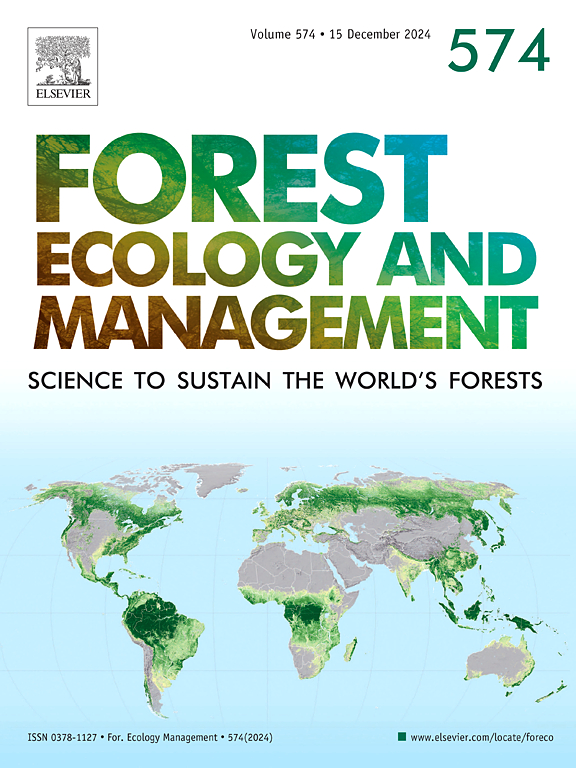Decadal decline in forest floor soil organic carbon after clear-cutting in Nordic and Canadian forests
IF 3.7
2区 农林科学
Q1 FORESTRY
引用次数: 0
Abstract
Nordic and Canadian forests store substantial amounts of carbon (C) and are largely managed in a silvicultural system with clear-cut harvest. Previous meta-analyses of harvesting effects on soil C have shown short- to long-term declines after harvest, but effects of clear-cutting on boreal and northern temperate forest soil C stocks remain unresolved. We harmonized National Forest Soil Inventory (NFSI) data from Sweden, Denmark, Finland, Norway and Canada to examine soil C stocks up to 53 years following clear-cut harvest using a space-for-time approach. We analyzed forest floor and mineral soil C stocks in coniferous and deciduous/mixed forests. Coniferous forest floor C stocks decreased for ∼30 years after clear-cutting: when at its lowest stock level, Picea and Pinus forest floor C stocks had decreased by 23 % and 14 % relative to initial stock levels, respectively. Picea forest floor C stocks then remained close to its lowest levels until 53 years after clear-cutting, while for Pinus-dominated forests they increased again and recovered to the pre-harvest level 48 years after clear-cutting. No C stock changes were detected in the 0–10 cm or 10–20 cm mineral soil layers, while a small increase in 55–65 cm mineral soil was detected in Podzol soils. Data was too limited to detect statistical signals of clear-cutting for deciduous/mixed forests. Our results shows that clear-cut harvest has substantial and long-lasting effects on northern temperate and boreal forest soil C storage, and that combining data from several NFSIs can help elucidate forest management effects on soil C storage.
求助全文
约1分钟内获得全文
求助全文
来源期刊

Forest Ecology and Management
农林科学-林学
CiteScore
7.50
自引率
10.80%
发文量
665
审稿时长
39 days
期刊介绍:
Forest Ecology and Management publishes scientific articles linking forest ecology with forest management, focusing on the application of biological, ecological and social knowledge to the management and conservation of plantations and natural forests. The scope of the journal includes all forest ecosystems of the world.
A peer-review process ensures the quality and international interest of the manuscripts accepted for publication. The journal encourages communication between scientists in disparate fields who share a common interest in ecology and forest management, bridging the gap between research workers and forest managers.
We encourage submission of papers that will have the strongest interest and value to the Journal''s international readership. Some key features of papers with strong interest include:
1. Clear connections between the ecology and management of forests;
2. Novel ideas or approaches to important challenges in forest ecology and management;
3. Studies that address a population of interest beyond the scale of single research sites, Three key points in the design of forest experiments, Forest Ecology and Management 255 (2008) 2022-2023);
4. Review Articles on timely, important topics. Authors are welcome to contact one of the editors to discuss the suitability of a potential review manuscript.
The Journal encourages proposals for special issues examining important areas of forest ecology and management. Potential guest editors should contact any of the Editors to begin discussions about topics, potential papers, and other details.
 求助内容:
求助内容: 应助结果提醒方式:
应助结果提醒方式:


